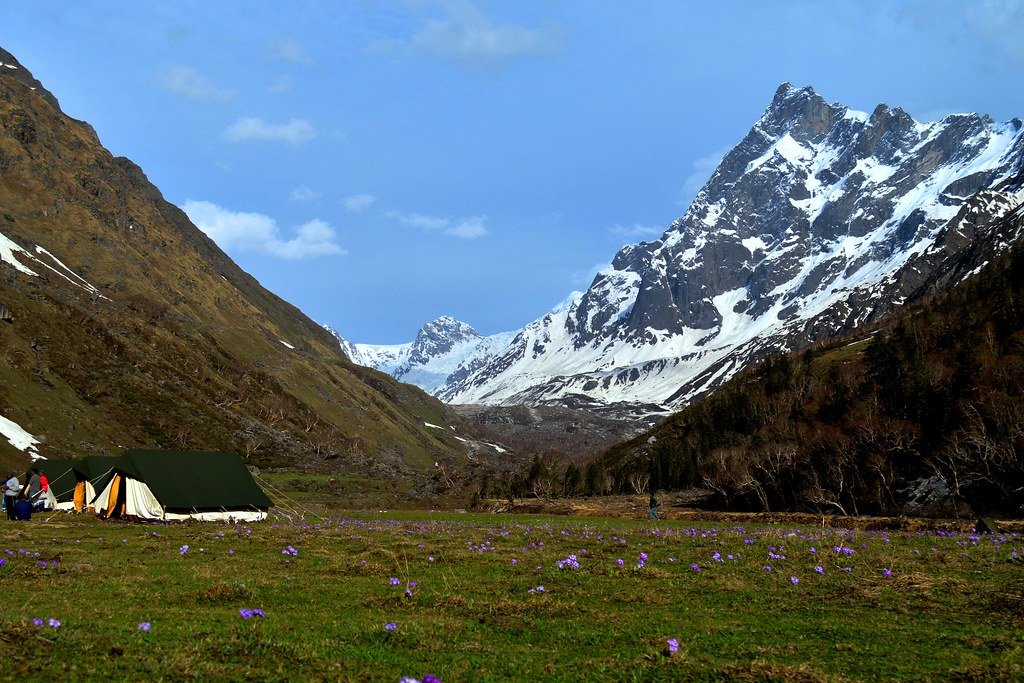18 Places To Visit In Solan | Complete Tour Guide | How To Reach
Solan, situated in the Indian state of Himachal Pradesh, serves as the district headquarters of Solan district. Located 45.5 kilometres south of the state capital, Shimla, it boasts an average elevation of 1,550 metres. Positioned between Chandigarh and Shimla on the Chandigarh-Kalka-Shimla highway, Solan is named after the Hindu goddess Shoolini Devi, a manifestation of Goddess Durga in her warrior aspect. The city is renowned for its ancient temples and monasteries, including the Shoolini Mata Temple, Jatoli Shiv Temple, Yung Drung Monastery, and Arki Fort. Often called the Mushroom City of India and the City of Red Gold, Solan is celebrated for its high-quality mushroom and tomato production. With its stunning views of the Himalayan foothills and a rich colonial heritage, Solan is a vibrant tourist destination bustling with activities.
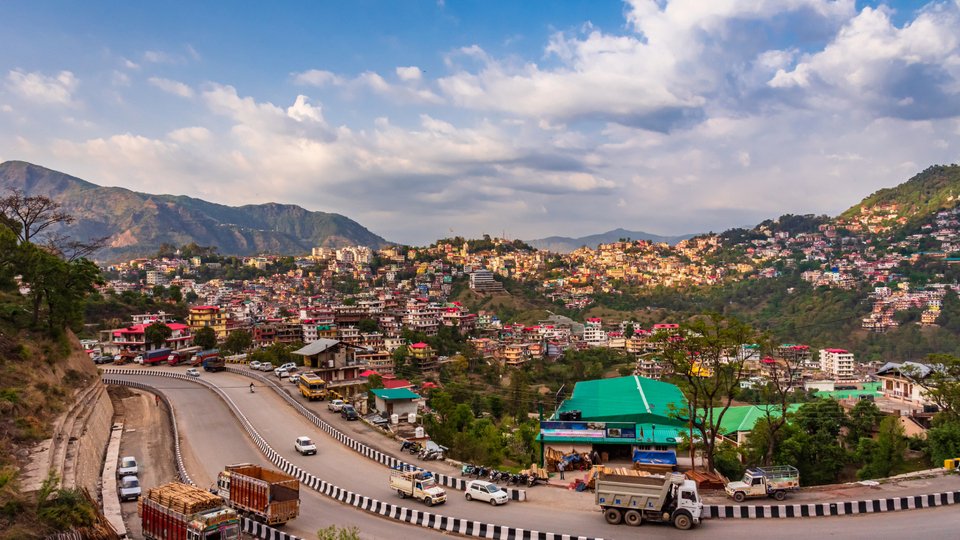
Best Places To Visit In Solan:
Highlights include the Shoolini Mata Temple with its scenic views, the Mohan Shakti Heritage Park showcasing Indian culture, and the Karol Tibba hill for trekking. Wildlife enthusiasts can explore the Solan Brewery Wildlife Sanctuary. Solan offers a blend of culture, nature, and wildlife for a memorable getaway.
Here are some places to visit in Solan:
1. Shoolini Mata Temple
The magnificent Shoolini Mata Temple, situated in the Solan district of Himachal Pradesh, India, is a Hindu temple dedicated to Mata Shoolini Devi, believed to be an incarnation of Goddess Durga. This temple stands out as one of Solan’s prime attractions, with the town itself reputedly named after the deity. Legends speak of the temple once being the goddess’s abode. Set amidst stunning landscapes, the temple offers a picturesque setting and serves as a popular pilgrimage destination, drawing devotees from across the country. A highlight of the temple is the annual Shoolini Utsav, held in the last week of June, when the temple and its surroundings are adorned with vibrant lights, creating a mesmerizing sight at night. During the festival, the idol of Maa Shoolini is carried in a palki (palanquin), and elaborate poojas are performed. The festival also features cultural performances, including singing, dancing, and traditional sports like wrestling.
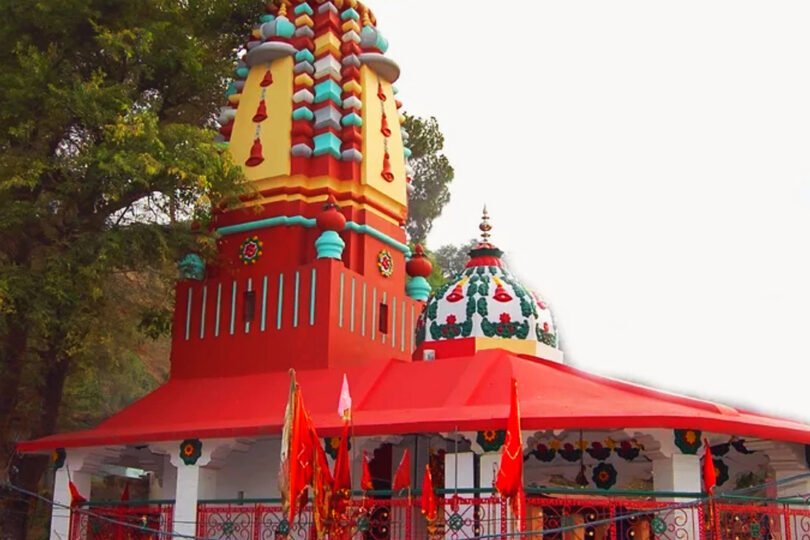
Timings: Open from 6:00 AM to 10:00 PM.
2. Jatoli Shiv Temple
The Jatoli Shiv Temple, a splendid Hindu temple located in Himachal Pradesh’s Solan district, India, is dedicated to Lord Shiva. Renowned as the tallest Shiva temple in Asia, it showcases the South-Dravidian architectural style, featuring a mandapa (hall) preceding the main shrine and a towering shikhara (spire) over the sanctum sanctorum. The shikhara, a testament to remarkable engineering and architectural prowess, soars to an impressive height of approximately 111 feet, adorned with intricate sculptures of various Hindu deities. A revered destination for Lord Shiva devotees, the temple draws a significant number of pilgrims annually. It is believed that the temple once served as Lord Shiva’s resting place. Surrounded by awe-inspiring landscapes, the temple provides a picturesque and serene setting, making it a must-visit for spiritual seekers and tourists alike.
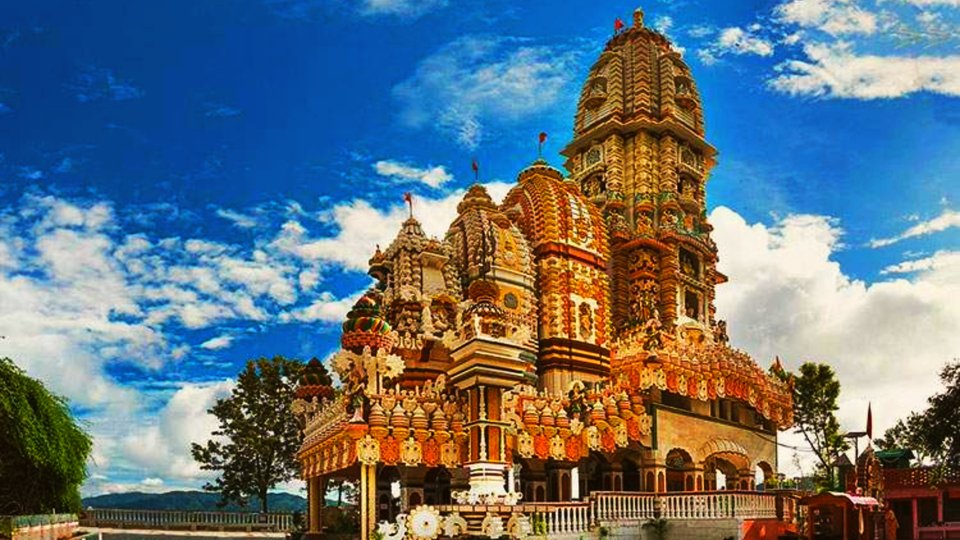
Timings: Open from 4:00 AM to 8:00 PM.
However, during festival seasons, the timings may be extended until 11:00 PM. The temple is particularly enchanting to visit in the evening, especially from 5:00 PM to 7:30 PM.
3. Yungdrung Tibetan Monastery
The Yung Drung Tibetan Monastery, also known as Menri Monastery or Bon Monastery, stands as one of Solan’s oldest and most vibrant sites in Himachal Pradesh, India. This monastery serves as a significant center for Buddhism and the Bon sect, an indigenous branch of Tibetan Buddhism, dating back to its construction in the 7th century during the reign of Tibetan ruler Songtsan Gambo. Regarded as one of India’s oldest Buddhist monasteries, it is steeped in rich history and spiritual significance. At the monastery, visitors encounter a large statue of Lord Shenrab Mibo, a revered Bon deity. The monastery bursts into festivity, color, and vibrance during the New Year’s Eve, when Cham or the Bon Dances are performed here. This period offers a particularly enchanting experience for visitors. Additionally, the monastery provides a valuable opportunity to deepen one’s understanding of Buddhism, the Bon sect, and various facets of Tibetan culture.
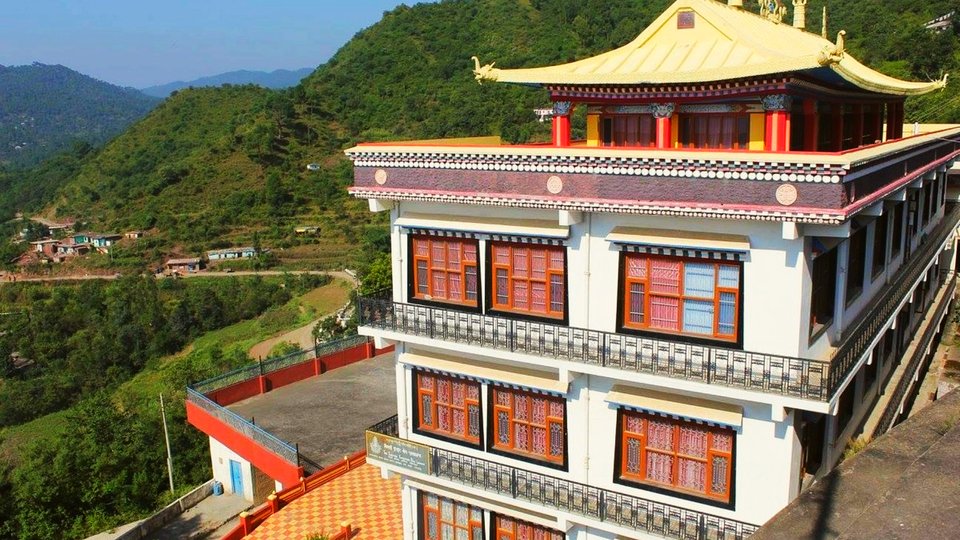
4. Arki Fort
Arki Fort, situated in the town of Arki in Himachal Pradesh’s Solan district, India, is a historical gem with a story dating back to its construction between 1695 and 1700 by Rana Prithvi Singh of the Baghal State. This fort stands out for its unique blend of Mughal and Rajput architectural styles, showcasing exquisite murals and frescoes adorning its walls and ceilings. The fort’s history is marked by significant events, notably its capture by the Gurkhas in 1806 during their expansion into Himachal Pradesh. It served as a stronghold for Gurkha General Amar Singh Thapa until 1815 when the combined forces of Rana Jagat Singh of Baghal and the British drove out the Gurkhas during the Gurkha War. Today, Arki Fort has become a favored destination for tourists seeking a glimpse into the region’s past and its rich artistic heritage.
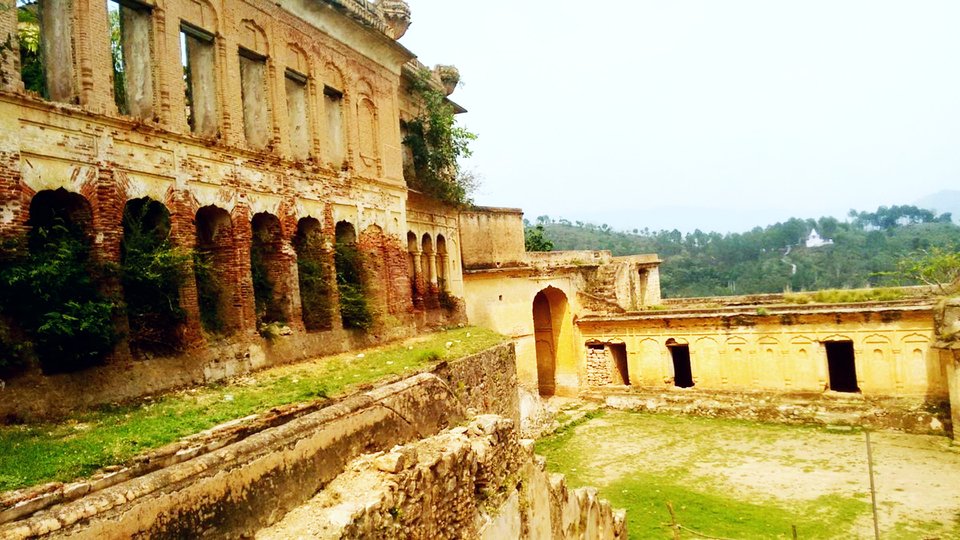
5. Mohan Shakti Heritage Park
Mohan Shakti Heritage Park, also known as Solan Heritage Park, stands as a modern-era Indian heritage complex located in Harat, near Solan, Himachal Pradesh. Positioned approximately 40 kilometers south of Shimla and 15 kilometers north of Solan, this park spans 40 acres and was established by Brigadier Kapil Mohan, a retired Brigadier of the Indian Army and a Padma Shree awardee. Perched on a hillside, the park offers stunning views of the Himachal valley and the Himalayan foothills. It boasts an expansive garden and park, crowned by a large Hindu temple featuring two prominent “Om” symbols and Surya in a seven-horse chariot. The temple’s intricate artwork depicts tales from Hindu legends, including narratives from the Vedas, the Ramayana, and the Mahabharata. Moreover, the park showcases motifs of Indian culture and life-size statues of Vedic rishis, Hindu mythical figures, and deities, adding to its cultural and artistic appeal.
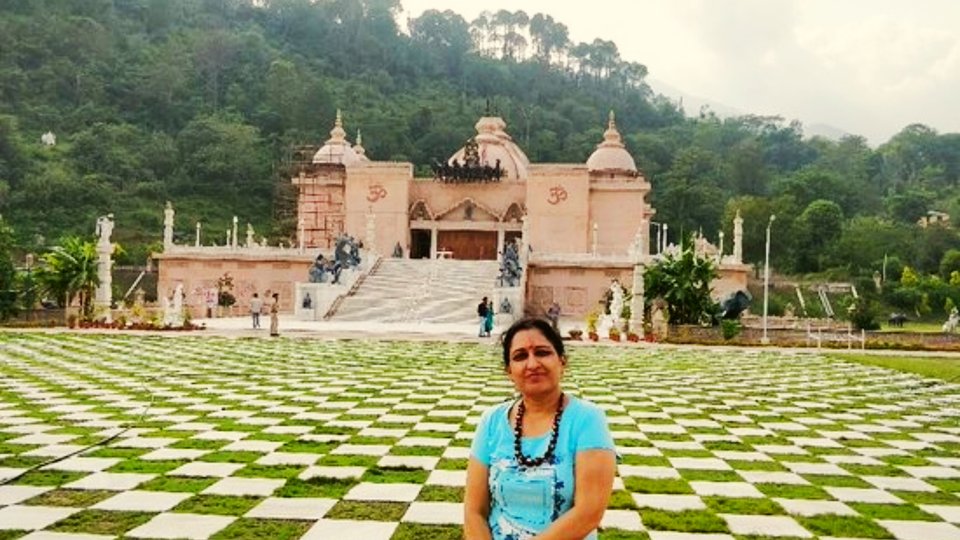
Timings: Open from 9:00 AM to 7:00 PM.
The best time to visit the park is between 10:00 AM to 1:00 PM and 4:00 PM to 7:00 PM.
Entry fees: free.
6. Karol Tibba
Karol Tibba, a prominent peak near Solan, Himachal Pradesh, is renowned for its sweeping panoramic vistas and the legendary Pandava Cave. Standing tall at 2240 meters, it claims the title of the region’s highest point and is a beloved destination for trekkers. The trek to Karol Tibba winds through dense forests, offering an enchanting journey to explore the ancient cave, believed to be the Himalayas’ longest and linked to the Pandavas from the epic Mahabharata. Upon reaching the summit, trekkers are rewarded with breathtaking views of the surrounding valleys and cities, including Shimla and Churdhar peak, on clear days. Adding to its allure, the area holds spiritual significance, boasting a temple dedicated to Goddess Kali at its peak.
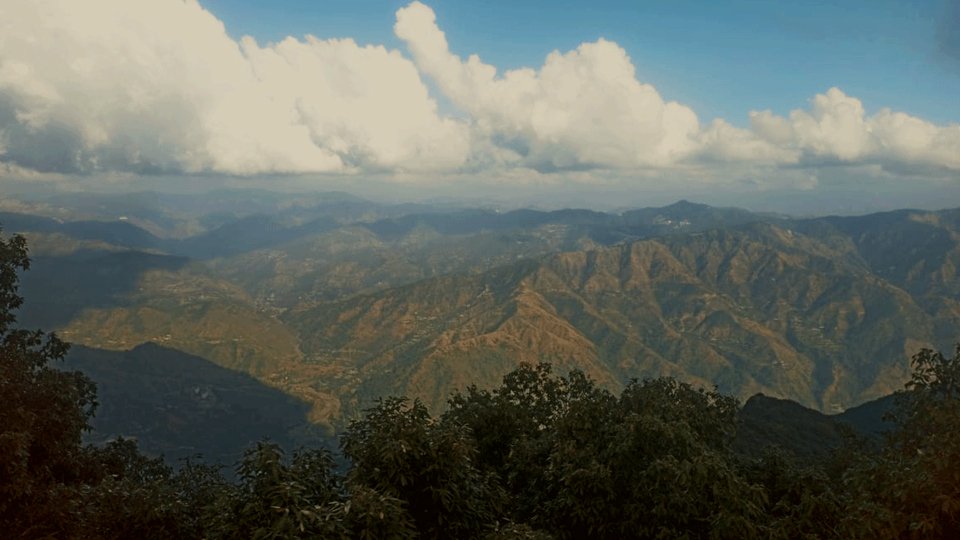
7. Kasauli
Kasauli, a tranquil hill station and cantonment town nestled in the Solan district of Himachal Pradesh, India, bears a rich colonial heritage and natural splendor. Established by the British Raj in 1842, it exudes an old-world charm blended with picturesque surroundings. Situated at an elevation of 1,800 meters (5,900 ft), Kasauli offers a refreshing escape with sweeping views of the Himalayas. Renowned for its serene atmosphere, delightful colonial architecture, and notable landmarks such as the Central Research Institute, Baptist Church, and the Gilbert Trail, Kasauli is an idyllic retreat for those seeking peace and a dash of historical allure.
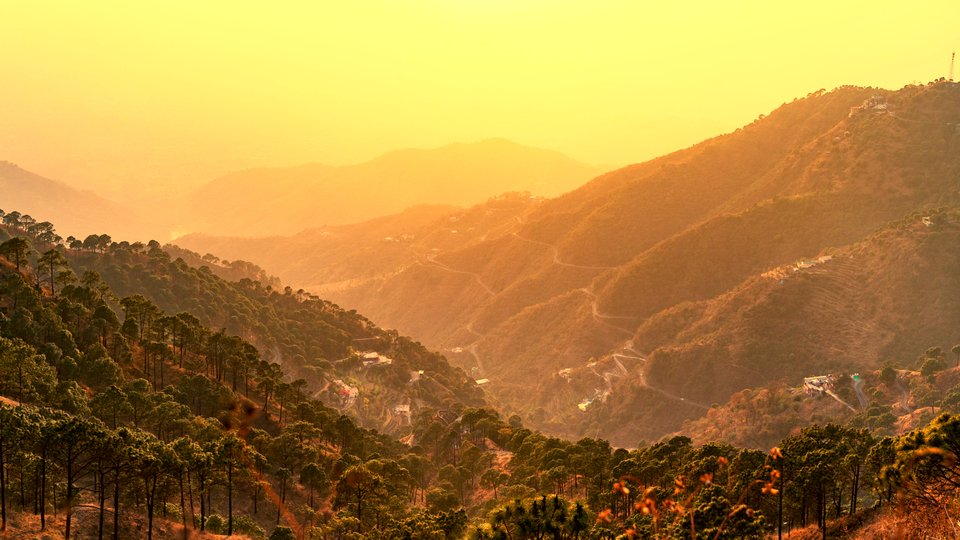
8. Chail
Chail, a charming hill station nestled in Himachal Pradesh’s Solan district, India, is renowned for its tranquil beauty and dense forests. Perched at an altitude of 2,250 meters (7,380 ft), it offers a serene escape from urban clamor, located 45 kilometers from Solan city and 44 kilometers from Shimla. The town is celebrated for the majestic Chail Palace, originally a summer retreat crafted by the Maharaja of Patiala during the British Raj. Revered for its splendid architecture, the palace has been repurposed as a hotel. Additionally, Chail boasts the world’s highest cricket ground, positioned at an elevation of 2,444 meters and formerly owned by the Patiala royal family. Chail’s pristine forests and panoramic views of the lower Himalayas make it a haven for hikers, with excellent trekking routes originating from Junga, Kufri, and Ashwani Khad in Solan.
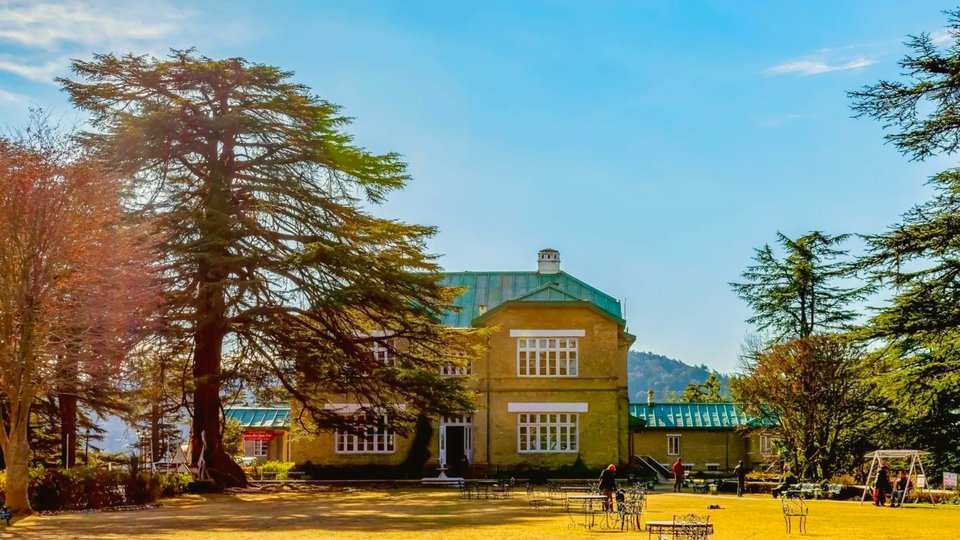
9. Majathal Sanctuary
Majathal Sanctuary, a wildlife reserve situated in Himachal Pradesh’s Solan district, was established in 1974. Encompassing around 39.4 square kilometers, it is situated at an elevation of 1,966 meters above sea level. The sanctuary is renowned for its rugged and steep terrain, providing a habitat for a diverse range of wildlife, including the endangered cheer pheasant and the Himalayan goral. It also houses species such as the Himalayan black bear, leopard, rhesus macaque, and barking deer. Majathal Sanctuary is a haven for trekkers, offering well-marked trails for those eager to explore its natural splendor.
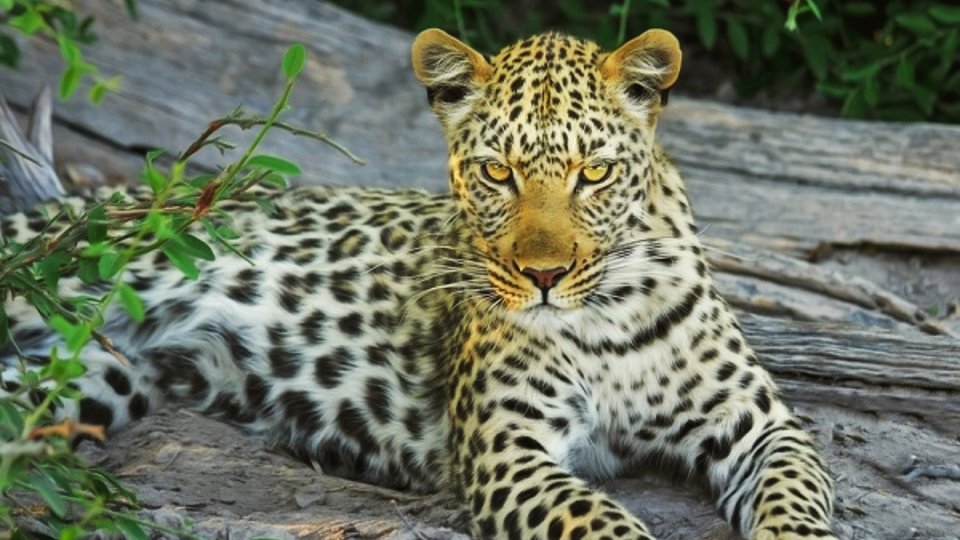
10. Solan Brewery
Solan Brewery stands as one of India’s oldest breweries. Established in 1855, Initially founded by Edward Dyer as Dyer Breweries, it is currently under the operation of Mohan Meakin Ltd. Situated near the Solan railway station, the brewery boasts a rich history and has been transformed into a distillery. It is renowned for crafting a variety of premium beverages, including the famed Old Monk, Rum and Solan No. 1 Whiskey, using traditional brewing methods and natural ingredients. The brewery, particularly Old Monk Rum, holds a special place in Indian culture, attaining a cult following among rum enthusiasts. Solan’s manufacturing facilities are modernized and adhere to stringent quality control standards, ensuring the production of top-notch beverages. For those intrigued by the alcoholic beverage industry or India’s brewing history, Solan Brewery stands as a significant part of the country’s heritage.
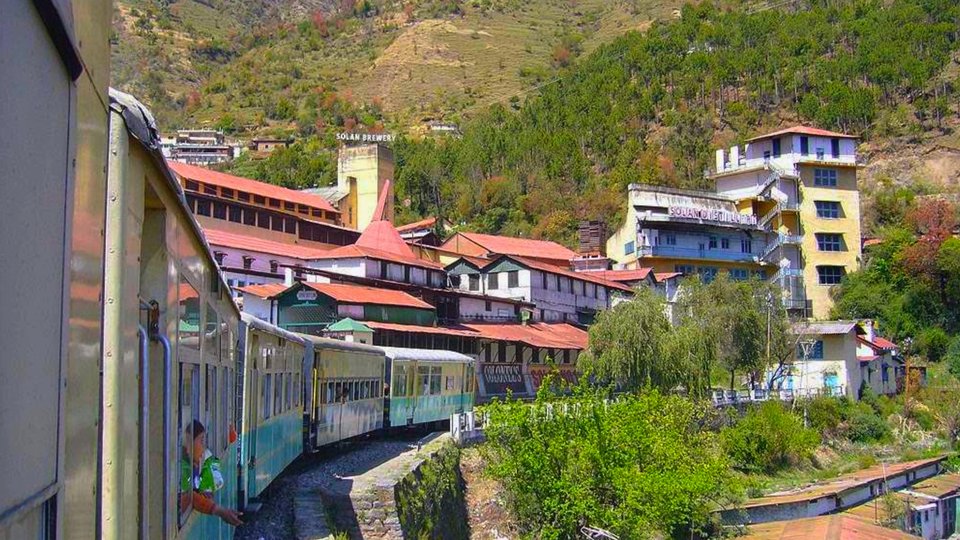
11. Children’s Park
Solan’s Children’s Park is a delightful destination designed for families and children, offering a variety of enjoyable activities and play equipment. The park is adorned with lush green lawns, vibrant flower beds, and features a charming small lake, creating a perfect setting for relaxation and play. Equipped with modern amenities such as swings, slides, and a merry-go-round, the park ensures entertainment for children of all ages. One of its highlights is the Haathi Gaadi, an elephant-shaped ride that is particularly popular among visitors. With no entry fee, the park welcomes everyone to enjoy a day amidst nature.
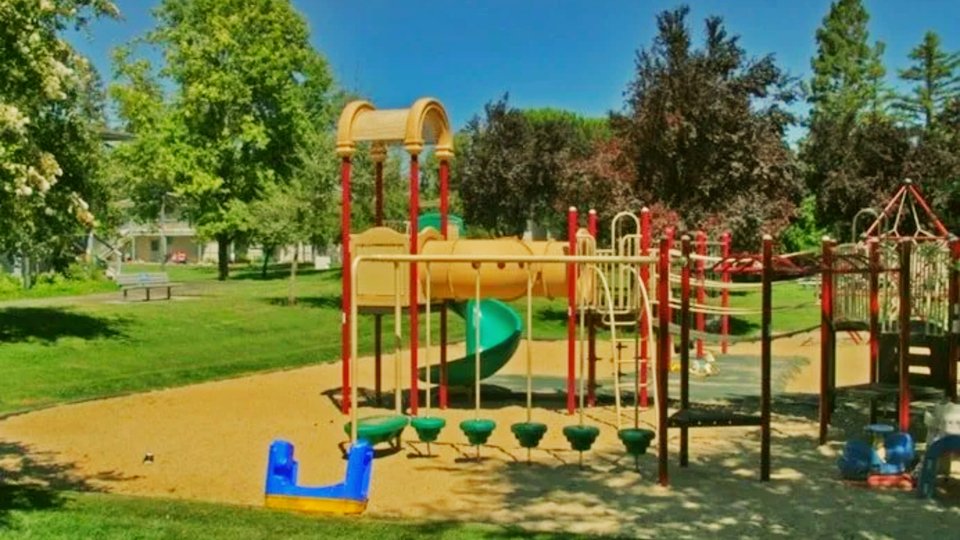
Timings: Open from 9 AM to 5 PM daily.
Entry fees: free.
12. Gilbert Trail
The Gilbert Trail, nestled in Kasauli near Solan, Himachal Pradesh, is a tranquil hiking path renowned for its scenic beauty and peaceful ambiance, offering hikers a serene retreat into nature. The trail, relatively easy to traverse, is ideal for bird watching, providing enthusiasts with the opportunity to observe various avian species in their natural habitat. Photography enthusiasts will also find delight in capturing the lush greenery and breathtaking panoramic views along the way. The trail culminates at Gilbert Point, offering a stunning vista of the surrounding hills and valleys. For optimal enjoyment, it is recommended to embark on the trail early in the morning or late afternoon when the weather is pleasant, and the natural beauty is at its peak.
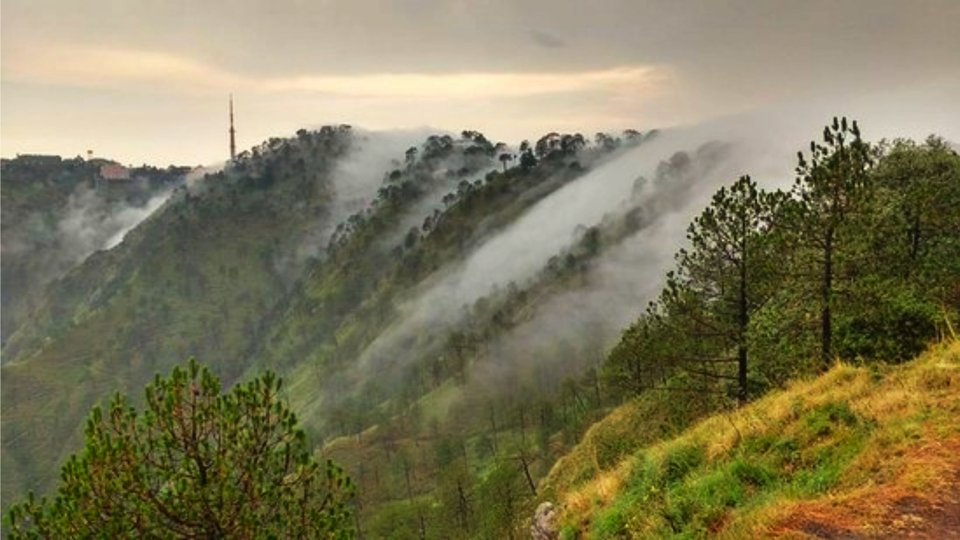
13. Sunset Point
Sunset Point in Kasauli, near Solan, Himachal Pradesh, stands as a beloved tourist spot celebrated for its captivating views, particularly during sunset. Situated within the tranquil Kasauli Cantonment Area, visitors can relish the sunset’s beauty from benches and capture stunning photographs of the surroundings. A 30-minute walk from the parking area leads to this picturesque point, emphasizing the need to check the sunset time and arrive promptly to witness the breathtaking view. Maintained by the Army, the area ensures a clean and serene environment for visitors. Additionally, there is a small park for children to play, along with ample seating arrangements, ensuring a comfortable and relaxing experience before and during the sunset spectacle.

14. Christ’s Church
Christ’s Church, a historical gem situated in Kasauli near Solan, Himachal Pradesh, stands as a testament to British architectural influence. Constructed in the shape of a cross, this church was built in 1844 by the British family who founded Kasauli. Surrounded by a serene grove of chestnut and fir trees, the church exudes a peaceful ambiance. Managed by the diocese of Amritsar under the Churches of North India (CNI), Christ’s Church is a must-visit for history and architecture enthusiasts, offering a glimpse into the region’s colonial past and architectural heritage.
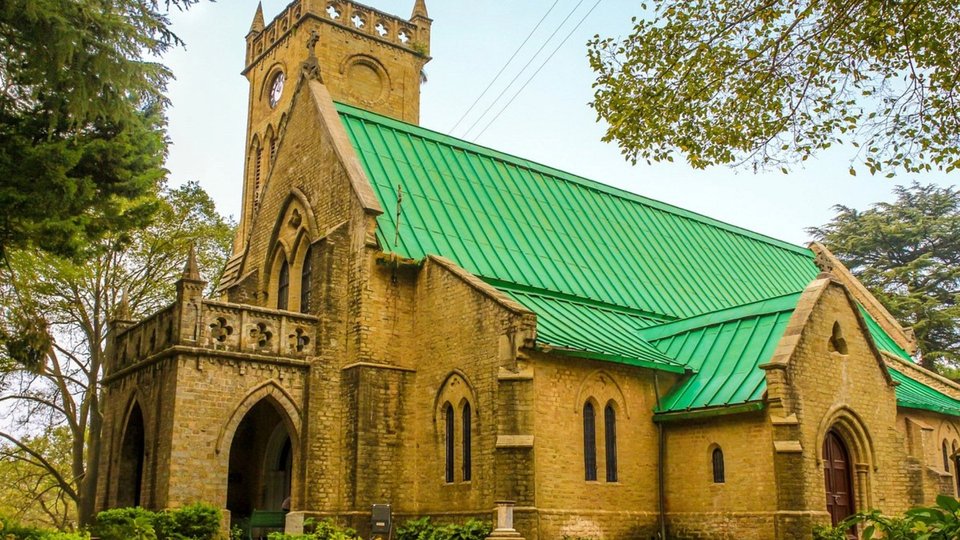
15. Stoned Kumbh Shiv Temple
The Stoned Kumbh Shiv Temple, situated in Chail near Solan, Himachal Pradesh, stands as a remarkable and spiritual destination. What sets this temple apart is its unique construction by a single individual, Satya Bhushan, who was inspired by a divine dream to undertake this endeavor. Over 38 years, he has painstakingly crafted the temple using local stones and slabs, creating a tranquil sanctuary for visitors seeking solace and a connection with Lord Shiva. Adorned with intricate stone carvings and nestled amidst a peaceful forest area, the temple exudes a mystical charm. It includes a small cave, further enhancing its spiritual ambiance. Satya Bhushan’s unwavering dedication and passion are evident in every detail of the temple, which he continues to develop with his own resources and the support of visitors.
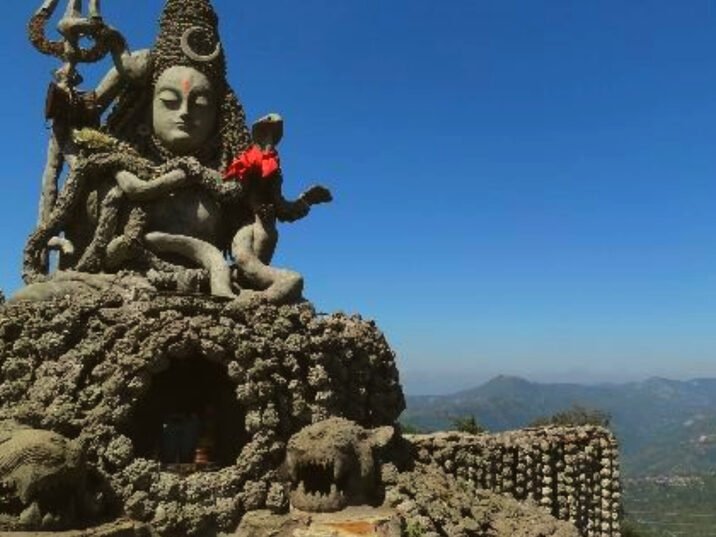
Timings: Open from 6:00 AM to 8:00 PM.
16. Shri Baba Balak Nath Temple
The revered Shri Baba Balak Nath Temple, located in Himachal Pradesh’s Solan district, is dedicated to Baba Balak Nath, a devoted follower of Lord Shiva. Positioned on Graner Hill near Kasauli, the temple is renowned for its spiritual aura and picturesque mountain vistas. Devotees flock to the temple with the belief that their prayers will be answered, finding solace and devotion in its serene environs. The temple complex includes an ashram where visitors can stay and engage in the temple’s rituals and activities. Reaching the temple involves a climb, which, although steep, is made easier by a sloped path. Upon reaching the temple, visitors are treated to breathtaking panoramic views of the lush green mountains, making it an ideal destination for both spiritual seekers and nature enthusiasts.
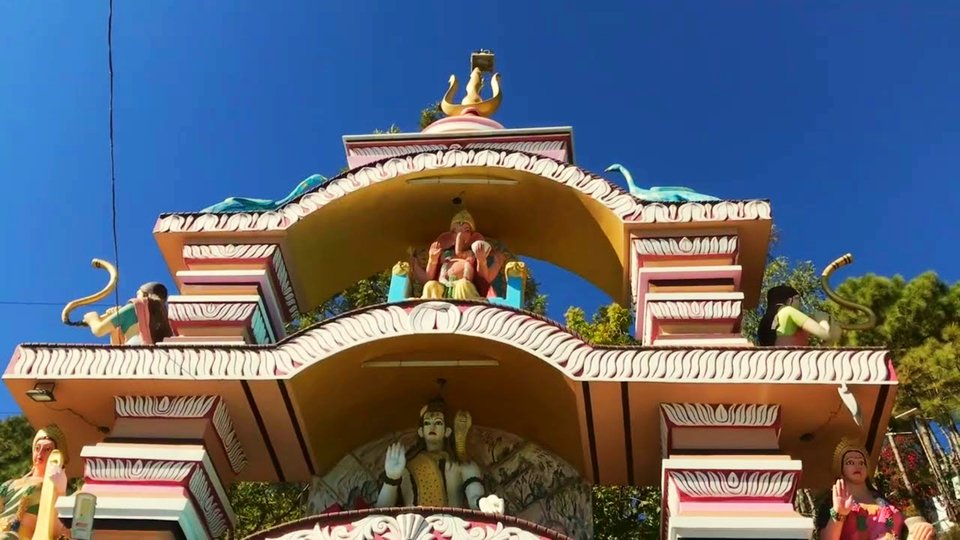
Timings: Open from 5:00 am. to 8:00 pm.
17. The Dagshai Jail Museum
The Dagshai Jail Museum, situated in Solan, Himachal Pradesh, is a historical site with a past as a prison. Constructed in 1847, it stands out as one of the few Indian museums that were originally jails. Perched at an elevation of 6,087 feet, the museum is under the care of the Engineering Wing of the Indian Army. It comprises 54 cells, 16 of which were designated for solitary confinement. The museum’s exhibits include old photographs, preserved jail cells, and a fire hydrant dating back to 1865. The Dagshai Jail boasts a significant history, including a visit from Mahatma Gandhi, who came to meet Irish prisoners, and it was also where Nathuram Godse, Gandhi’s assassin, was believed to be the last prisoner. Established in 2011, the museum offers insights into the jail’s history and its inmates.
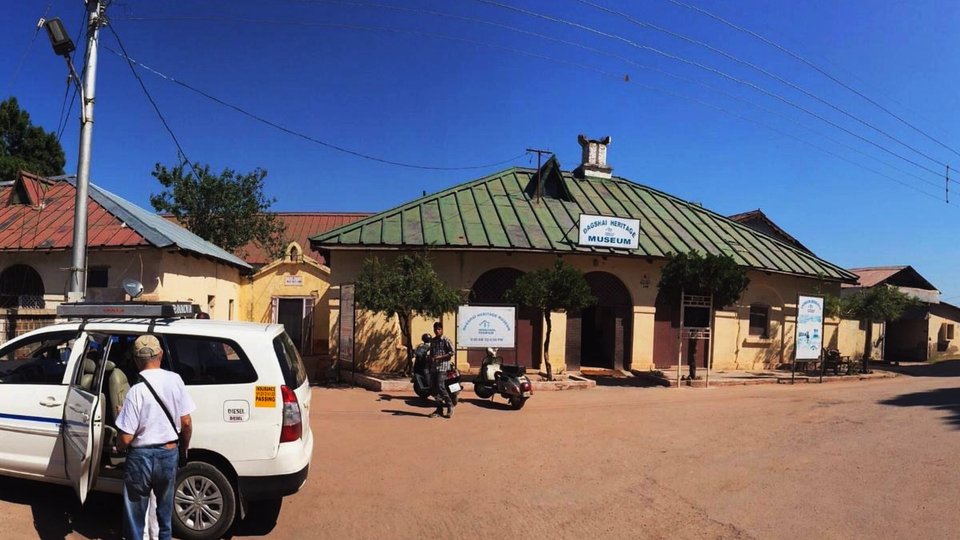
18. Grave of Barog
Solan, known as the “Mushroom City of India,” is a charming city located in Himachal Pradesh, India. Serving as the district headquarters of Solan district, it is nestled in the Shivalik ranges of the Himalayas. Positioned between Chandigarh and Shimla on the Kalka-Shimla National Highway-5, Solan is famed for its moderate climate and scenic vistas. With a history dating back to the time of the Pandavas, it was once the capital of the princely state, Baghat. Today, Solan is renowned for its cultivation of mushrooms and tomatoes, earning it the moniker “City of Red Gold.” The city also boasts ancient temples, monasteries, and a 300-year-old fort, adding to its cultural and historical allure.
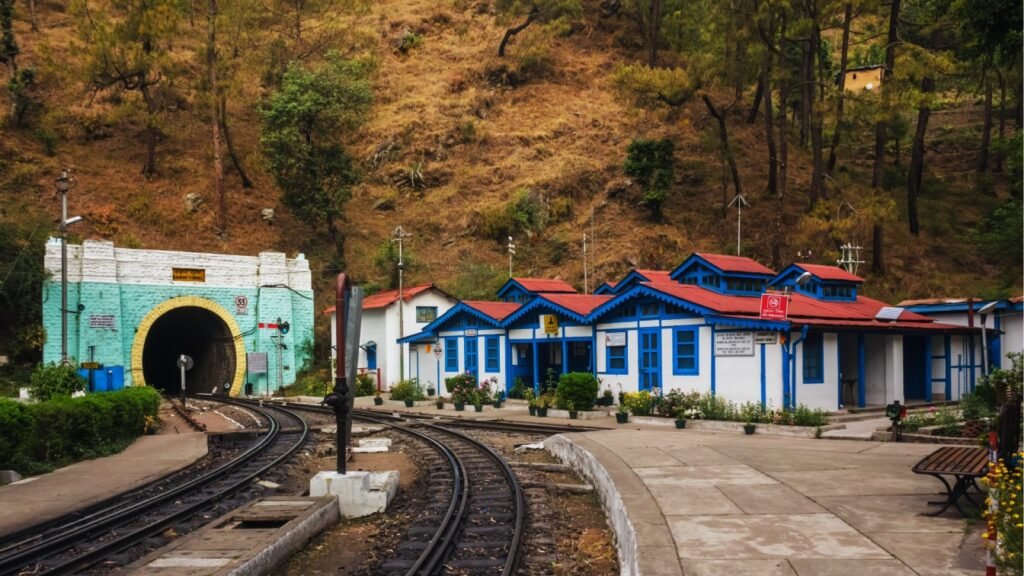
How To Reach Solan
By Air:
The nearest airport is Chandigarh Airport, located about 67 kilometers away from Solan. From the airport, you can hire a taxi or take a bus to reach Solan.
By Road:
Solan is well-connected by road to major cities in Himachal Pradesh and neighboring states. You can drive to Solan or take a bus from nearby cities like Shimla, Chandigarh, and Delhi.
Book A Cab: you can book a cab from our website along with a customized itinerary or can hire just a cab for your next trip. So just do hurry. Call Us On:- +911223577273
By Train:
The nearest railway station is Kalka Railway Station, situated approximately 44 kilometers from Solan. Kalka is well-connected to major cities like Delhi and Chandigarh. From Kalka, you can take a taxi or a bus to reach Solan.
create a table of trains from New Delhi to Kalka Railway Station, along with their name, number, timings and charges.
| Train Name | Train Number | Departure Time | Arrival Time | Duration | Fare |
|---|---|---|---|---|---|
| Shatabdi Express | 12011 | 07:40 AM | 11:40 AM | 4 hours | ₹ 1,050 – ₹ 2,500 |
| Shatabdi Express | 12005 | 17:15 PM | 21:15 PM | 4 hours | ₹ 1,050 – ₹ 2,500 |
| Netaji SF Express | 12311 | 21:10 PM | 03:00 AM (+1 day) | 5 hours 50 minutes | ₹ 1,050 – ₹ 2,500 |
Solan Weather & Temperature
Solan experiences a pleasant climate throughout the year, with mild summers (15°C to 30°C) and chilly winters (0°C to 20°C). Monsoons (July to September) bring moderate to heavy rainfall, enhancing the region’s greenery. Autumn (October to November) sees a gradual decrease in temperature, while winter (December to February) is cold, with occasional snowfall in nearby areas. It’s advisable to check the current weather forecast before visiting Solan.
Nearby Places To Visit In Solan
| Name | Distance from Solan |
|---|---|
| Arki Fort | 58 km |
| Darlaghat | 82 km |
| Mandi | 161 km |
| Dehradun | 179 km |
Frequently Asked Questions:
What is famous in Solan?
That’s a great question! Solan is a quaint hill station of Himachal Pradesh that got its name from the Hindu Goddess Shoolini Devi. The city is renowned for old temples, natural splendour and seasonal vegetable. Solan is also known as the Mushroom City of India and Mohan Shakti Heritage Park, Jatoli Shiv Temple, Yungdrung Tibetan Monastery and the Gurkha Fort.
Does Solan have snowfall?
Yes, Solan experiences snowfall during the winter months, particularly in December and January, as it’s situated at an elevation of around 1,600 meters. The snowfall adds a magical touch to the town, making it a popular destination for tourists seeking the winter charm.
Is Solan a hilly area?
Solan is indeed a hilly area, nestled in the Shivalik range of the Himalayas with an average elevation of 1,600 meters. It’s characterized by its mountainous terrain and is known for its scenic beauty and cool climate.
Why Solan is called Solan?
Solan is named after the Hindu goddess Shoolini Devi, the presiding deity of the region, in whose honor a fair is held annually. The name reflects the town’s rich cultural and religious heritage.



